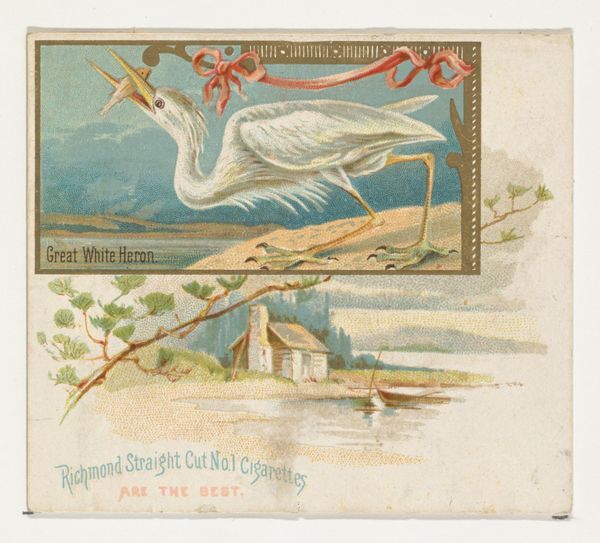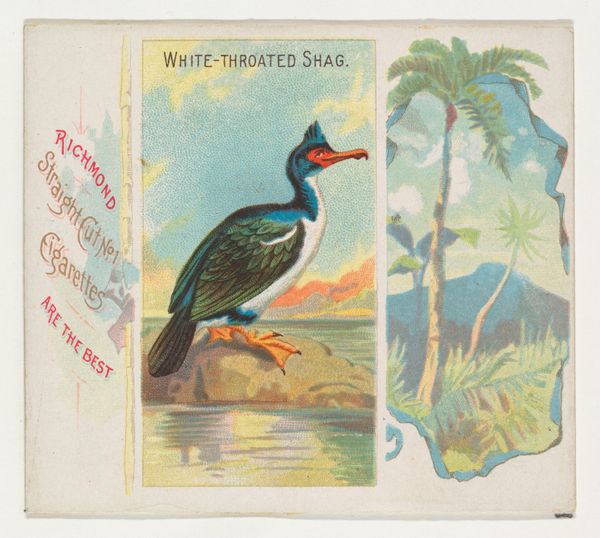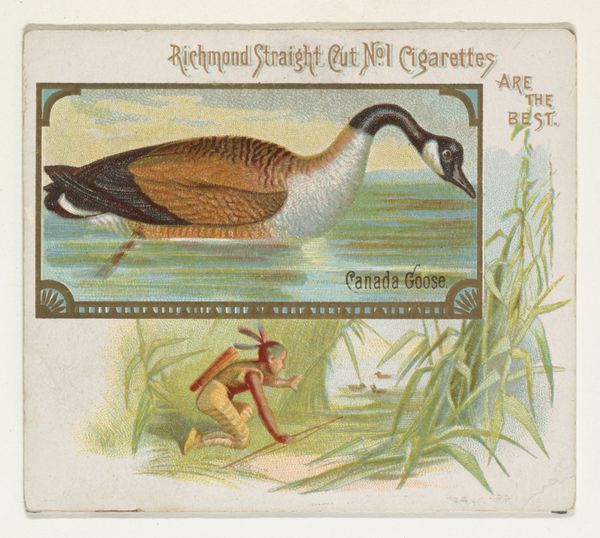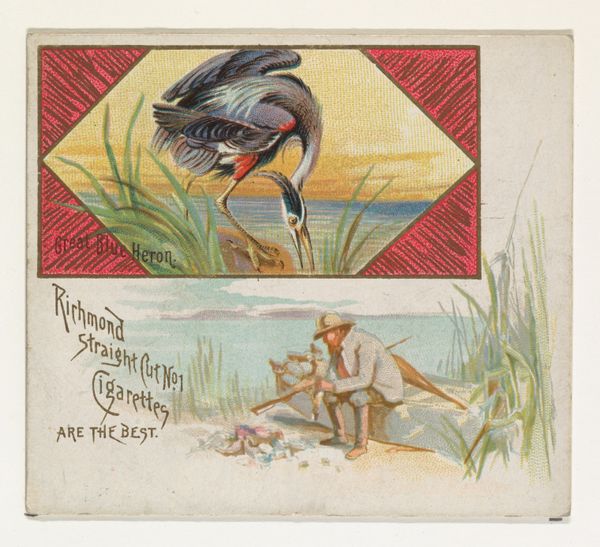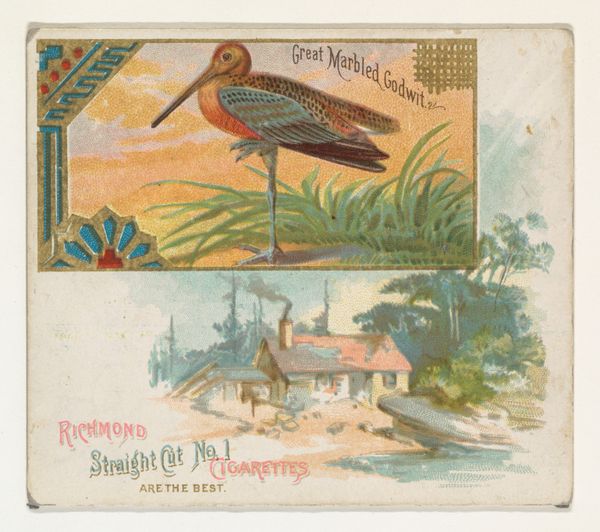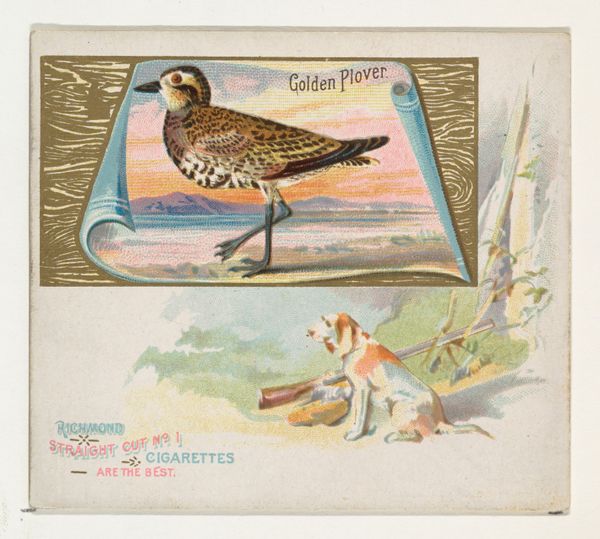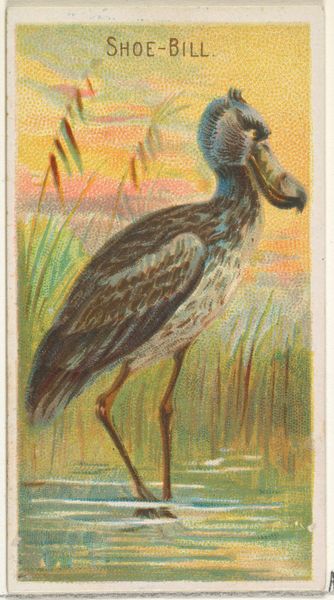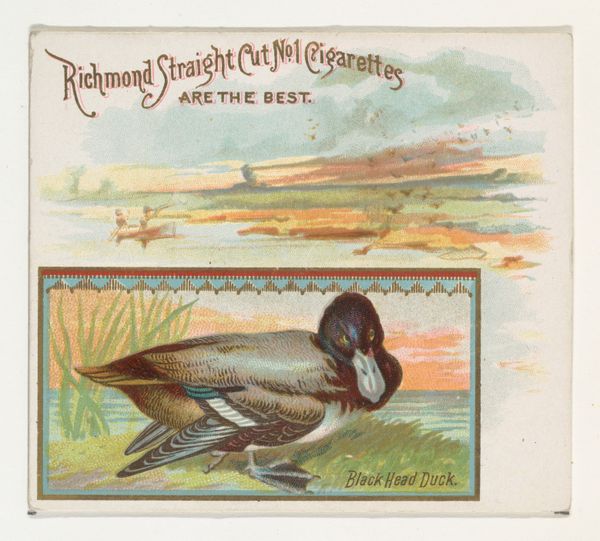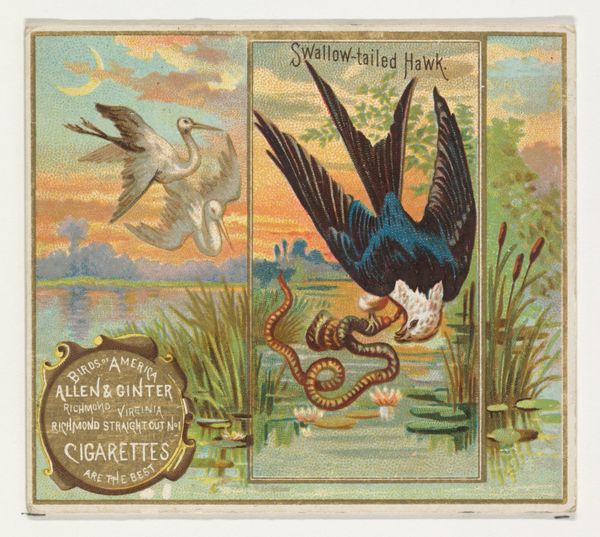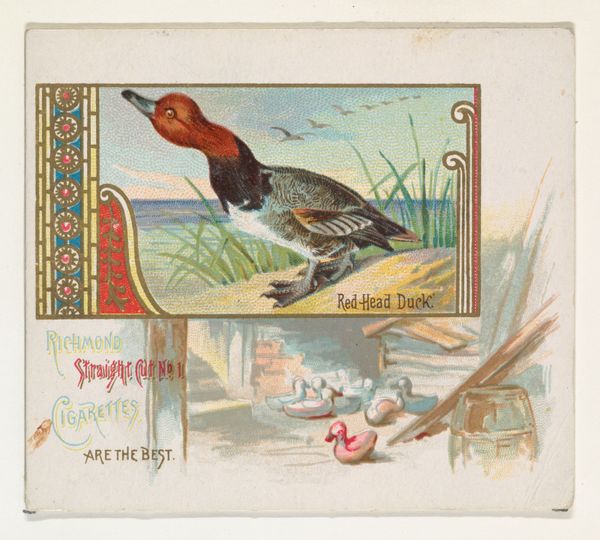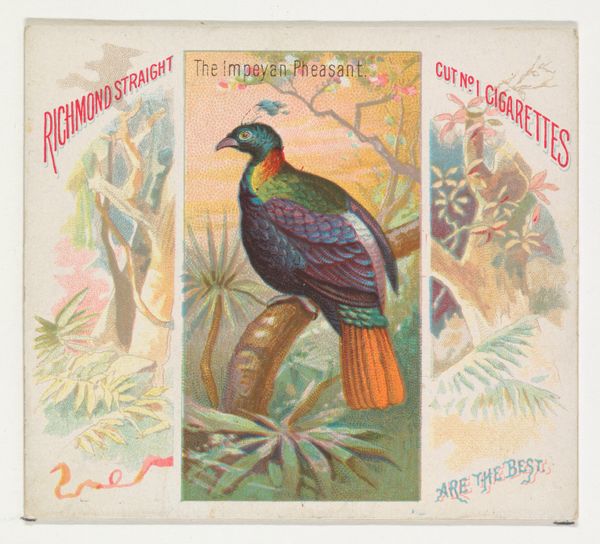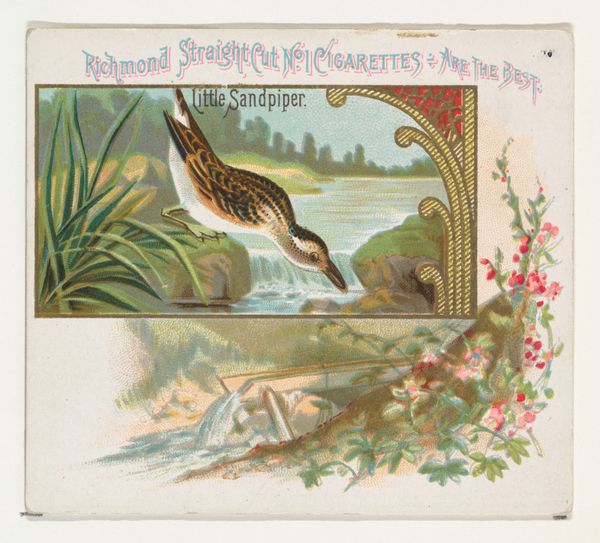
Shoe-Bill, from Birds of the Tropics series (N38) for Allen & Ginter Cigarettes 1889
0:00
0:00
Dimensions: Sheet: 2 7/8 x 3 1/4 in. (7.3 x 8.3 cm)
Copyright: Public Domain
Curator: What strikes me first is the oddly melancholic mood emanating from this small watercolor print. The Shoebill stands so still, almost pondering existence itself. Editor: Before we get lost in avian angst, let's remember the purpose of this artwork. It’s a trading card from Allen & Ginter's "Birds of the Tropics" series, circa 1889. Mass-produced for cigarette packs. This wasn't about existentialism; it was about product branding. Curator: I grant that the context is commercial, but let's not dismiss the artistry entirely. Observe how the artist uses a limited palette to create a sense of depth. The subtle gradations of color give form to the bird's plumage, creating a visually complex representation. There is a certain ukiyo-e influence at play, look at the tree to the left of the bird. Editor: I see your point about color, but let's consider the material conditions. These cards were churned out en masse. The cheap paper stock, the ink, the printing process—these things dictated the final aesthetic. There’s an immediacy in the materials, a roughness around the edges that comes from speed and scale of production. The laborers assembling these cigarette packs would not be interested in the subtlety of tones but instead on the volume and efficiency that comes with manual assembly and piecework. Curator: That is a rather reductive view, no? To see it simply as an illustration diminishes the intent. The shoebill dominates the composition and has an undeniably stately and somber form, especially that gaze and beak. I do think this reflects the growing fascination with the natural world. Editor: Agreed. And it reflects a commodification of that world. These images circulated as trade flourished. Collecting these became trendy, not due to pure aesthetics but how these objects operated within networks of exchange, consumption, and class. These cards were also a signifier of modernity, of new levels of industry that had become accessible. Curator: So, despite its commercial origin, you think that we can grant artistic merit due to its naturalistic expression through materiality and design? Editor: Exactly. What we think of art needs to acknowledge social processes of making. It forces us to consider not just its image but its complicated, material life.
Comments
No comments
Be the first to comment and join the conversation on the ultimate creative platform.
